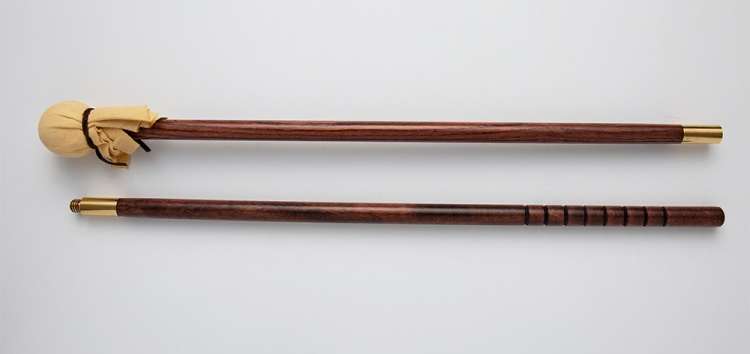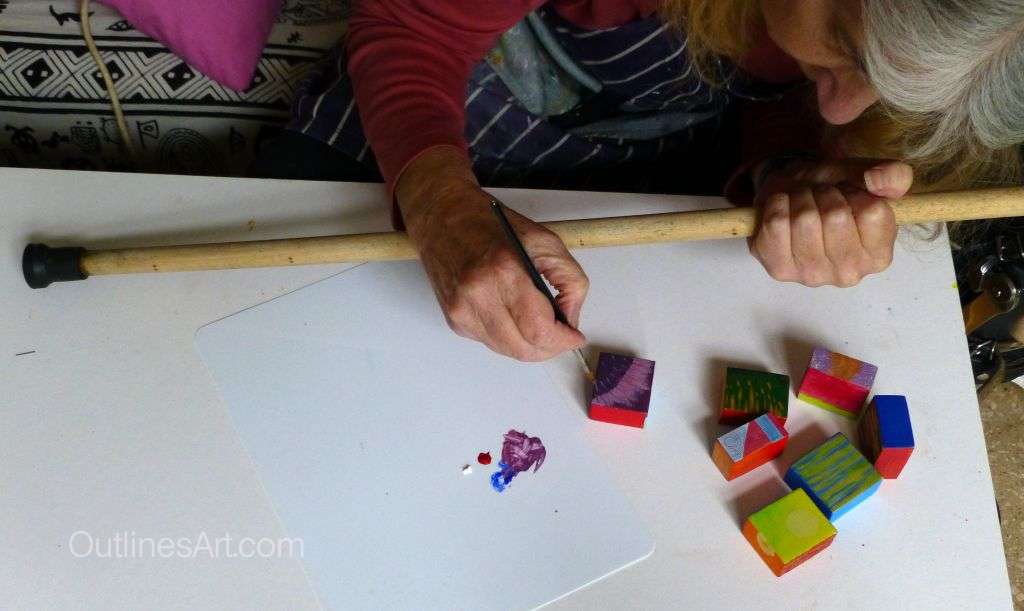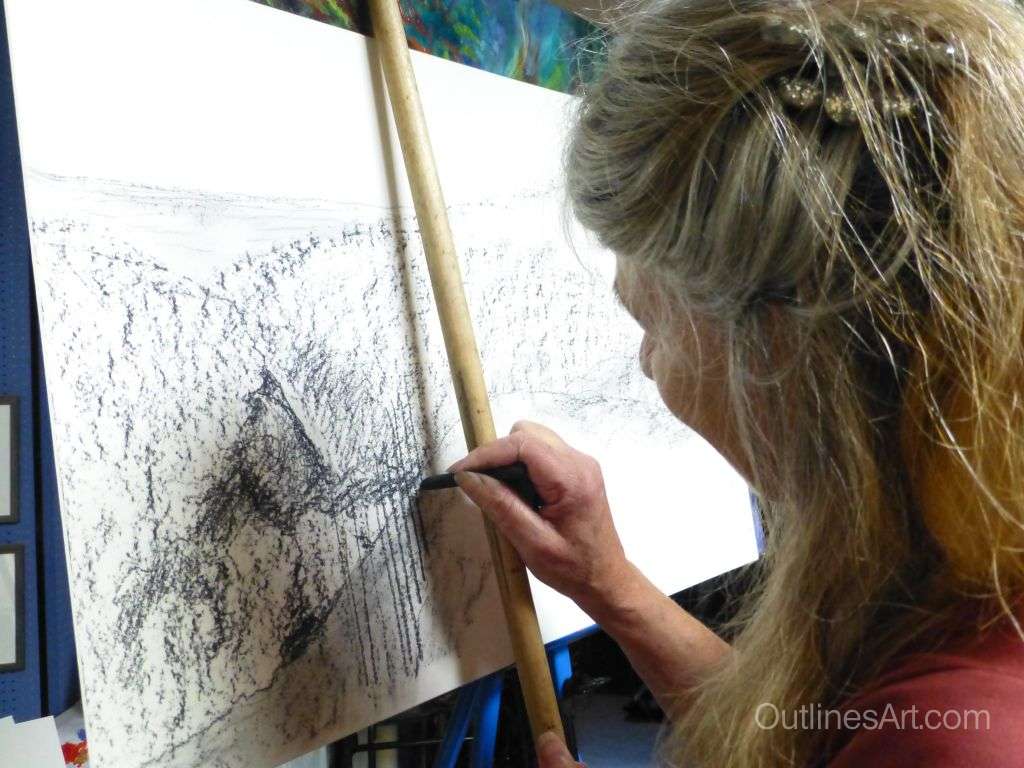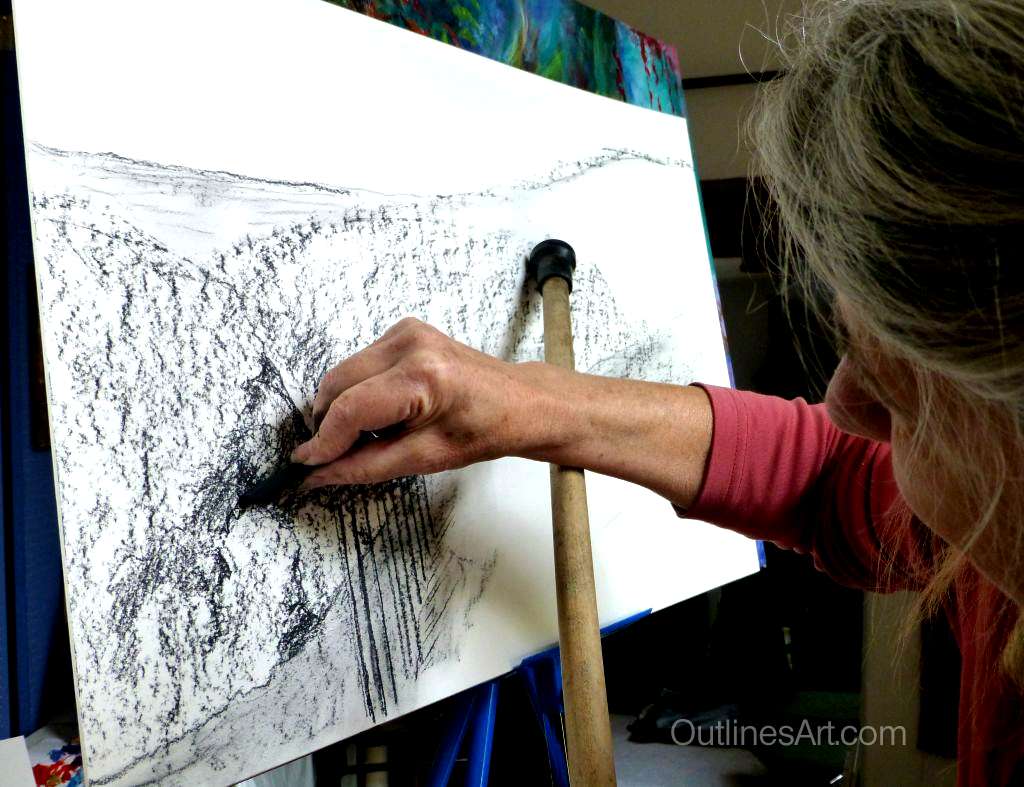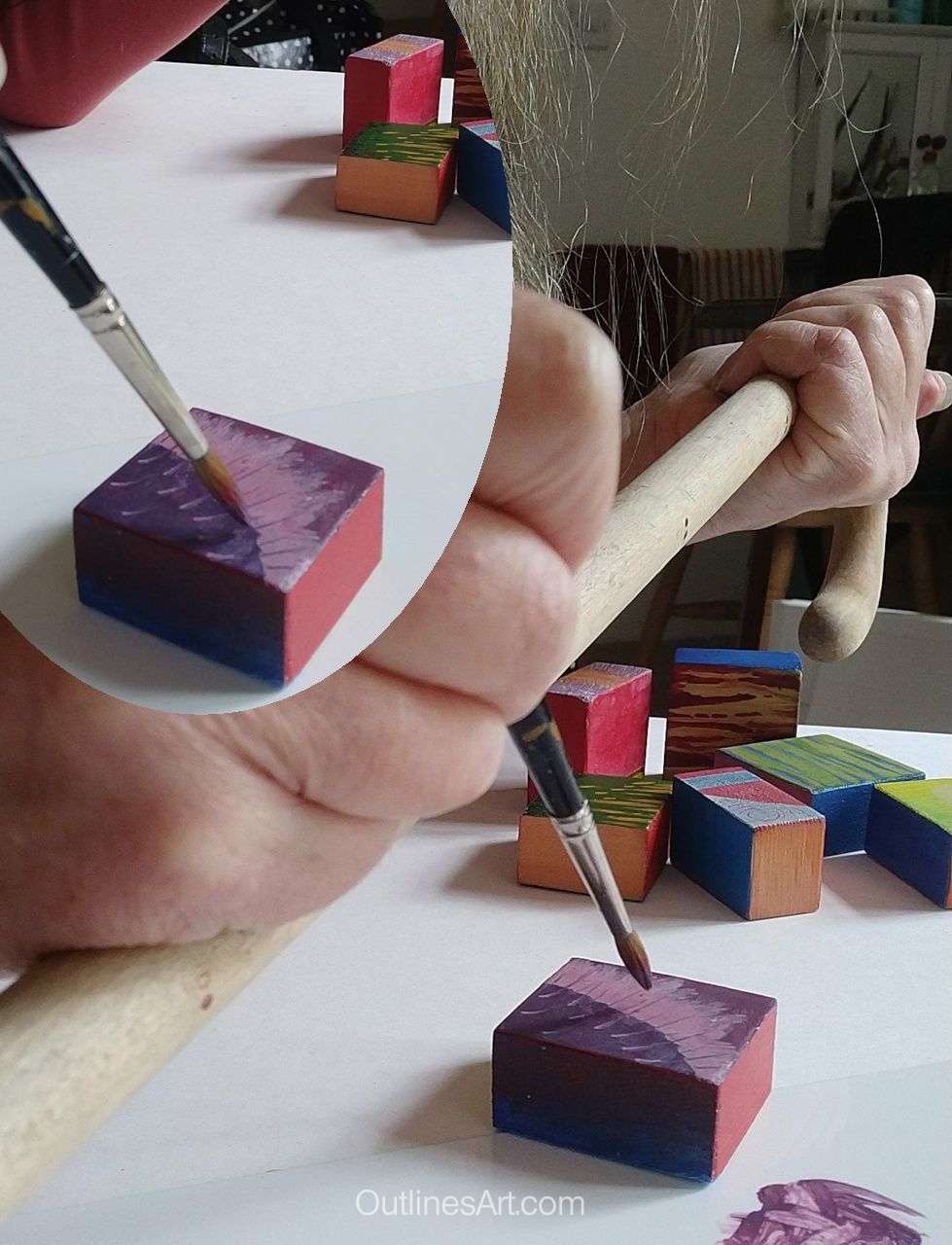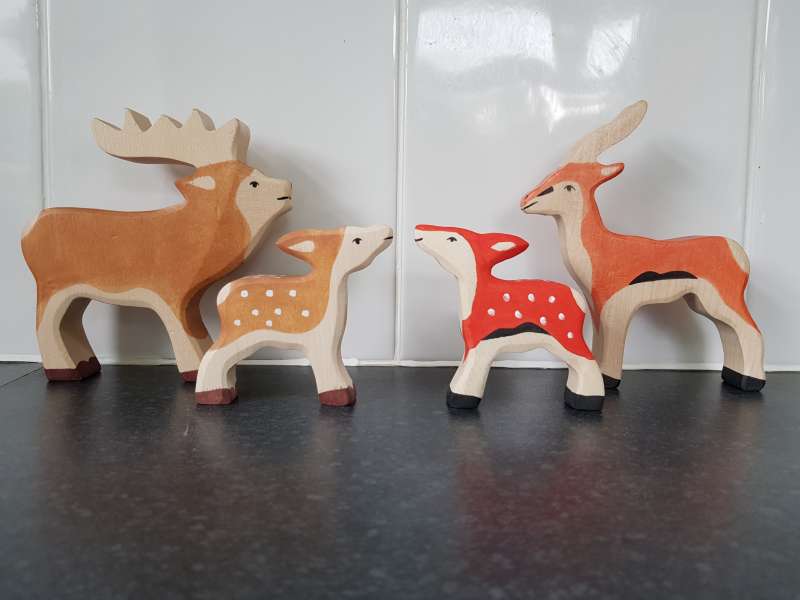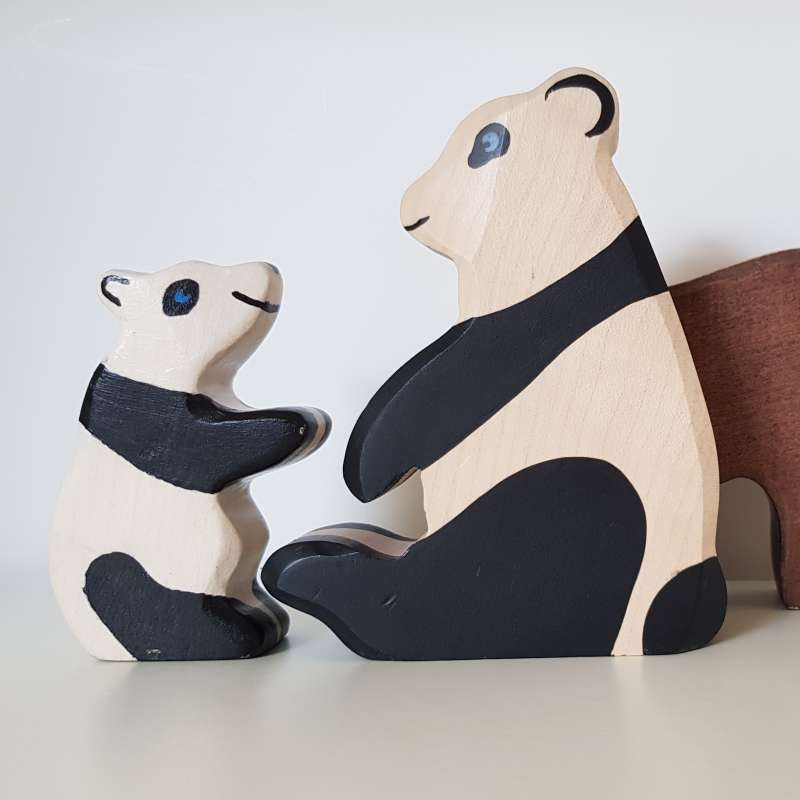Keep your hand Steady while painting
Do you worry about wobbly edges and lines when you are painting or are forever trying to avoid touching wet paint? Actually there are ways of solving this. There’s a tool for steadying!
When you are painting fine details it’s hard to be exact if your hand is waving about in mid-air. What you need is something to rest your hand on but you don’t want to touch the work itself in case you mess it up.
Signwriters and oil painters have this problem and long ago came up with a tool to support the hand holding the brush. This painter’s aid is called a ‘mahlstick‘ or more obviously, a ‘painter’s arm rest‘ or a ‘signwriters stick‘.
These sticks can be bought with several levels of sophistication designed for easy transport and packing away. The pole may be made of wood or aluminium and the ball shaped pad can be made of rubber or cork covered with leather or chamois.
This post may contain affiliate links for products I recommend. If you click a link and buy something I may receive some compensation. This does not affect the price the price you would pay. Links open in a new tab or window so you won’t lose this page:)
It’s a simple idea. A thin pole is padded at one end to rest on a dry part or outside the work without slipping or scratching, the pole is held at a low angle over the painting and the arm or hand rests on the pole above the part you want to paint.
Depending on your methods of painting the pole can be up to a metre long, but you can use a much shorter one if you are painting small things.
If you don’t want to make your own, you can buy this traditional Mahl Stick made up of two pieces so can be used long or short.
Contents:
| How to make your own Mahl Stick |
| Using the Mahl stick |
| A Beginner’s Remark |
| Painting Techniques and Preparation |
| Conclusion |
How to make your own Mahl Stick.
You will need :
- A length of wooden dowell about 1 cm thick
- A ball made of cork or anything that’s not too hard
- Chamois leather to cover (can be fake) or similar lint-free fabric.
- A short length of cord to secure
Method:
Make a hole in the ball to fit it on to the pole. The ball needs to fit tightly on one end of the pole so that it doesn’t pull off accidentally. Wrap the fabric or leather over the ball, gather it at the neck of the pole and tie it securely with the cord. If you feel it needs to be softer you can add a second layer.
Notes: If you can’t get a cork ball, you could try a small rubber bouncy ball or make a rounded end with air-dried clay and use extra padding before wrapping in chamois. The aim is to make a rounded end with a bit of ‘give’ in it that’s wider than the stick or dowell.
Suitable fabrics might be an offcut from a protective table cloth that has some padding.
Dowelling is generally made of strong dense wood so it can be thinner than a stick you might pick up or cut from a tree. We have trees and shrubs that have to be pruned each year and I always keep a few straight poles in case I need them for something and for this, I would choose one that’s not too heavy or cumbersome but that will not bend.
Using the Mahl stick
You can use the mahl stick or painter’s rest upright with or without an easel, or flat on a table for smaller items. If you need to stand on a ladder be aware that you usually need two hands to use this tool and take precautions accordingly. I think it would be better to change to a working platform with a safety rail if you need to work at height.
To illustrate working with an arm rest I’m going to use a walking stick! It has a rubber ferrule on the end so it shouldn’t slip. Now don’t go doing this rashly! This is only a demo and the ferrule could leave black marks on the wall or on your work. Better to make yourself a proper signwriter’s stick or buy one.
Hold the pole with the non-painting hand and rest the ball on a firm point of the work, the table or on the wall behind, keeping the other end away from the surface of the work at a shallow angle . If you are using an easel you can ‘hook’ the ball end over the top bar of the easel and let it be almost vertical in front of you. The main idea is to make a space between the area you intend to paint, and the pole.
Rest your painting arm, edge of the hand or some fingers on the pole you will find you can keep the brush steady while you paint. Don’t lean too hard and be careful not to dent a canvas.
When working flat on a table you’ll find you can lean a little harder as long as the ball is resting on the table, not your precious work.
You can use the pole as a guide for straight lines or lean gently for freehand curves, but try not to let it restrict the use of your wrist and fingers.
The stick is usually used for painting with brushes but you can use it for drawing details with charcoal or chalk so as to avoid smudging drawings.
Using a stick can help when you’re painting very small objects that you can’t hold because they are still wet and you don’t want to smudge anything.
A Beginner’s Remark
This article was prompted by a chance remark by a visitor who was new to painting and had just ordered her first set of Outlines paints. Kirsty Glover makes wooden animal figures and was keen to paint them. She sent me a message saying:
“I will be looking through your articles hoping to find something that tells me how to steady my hand! Can’t wait to get started on my projects (painting wooden animals for my children).”
Kirsty has made several toy animals for her children and is working towards making some to sell.
Kirsty uses a scroll saw to make the outlines of her own animal designs sanding them to a smooth finish before colourfully painting them. She will soon be offering some of her painted wooden animals for sale.
Kirsty was brand new to painting and I was happy to know her beginner’s concerns and write about them.
Techniques and Preparation
Wobbly lines and scratchy edges are not always a problem in art because some styles celebrate and emphasise such things but if your work needs to be precise, the surface you are painting needs to be smooth and have a coating that allows the brush to glide. Once you have that, plenty of practice will improve the control you have in your painting.
The way you hold your brush is important. A paintbrush should not be gripped tightly nor held right up close to the bristles. Tension in any part of the hand will make control harder. Hold the brush about halfway up the handle, gently held between finger and thumb and control the movement of the brush with the remaining fingers, keeping your wrist relaxed.
So remember to prepare your work properly; if it needs another sanding, do it again with a finer grit and realise that the time spent in preparation will always save time later on.
Practice painting over and over, the more you paint the better you will be able to do what you want.
Final thoughts and conclusion
Some kinds of painting really need precision, such as signwriting. Other examples are making art for advertising or book illustration and painting very small objects, although even these use a loose style at times.
Have a look at this traditional Mahl Stick which comes in two pieces that can be joined by a screw to use it long or use one piece for a short supporting stick.
Does your work need careful control and fine lines? If you have other ways of making it easier let everyone know in the comments below! Your comment may take a couple of days to appear so bookmark the page and come on back!
For a free demo series of emails right now and more tips and articles once in a while sign up to our newsletter here! We never sell your details and you can read our Privacy Policy here.

